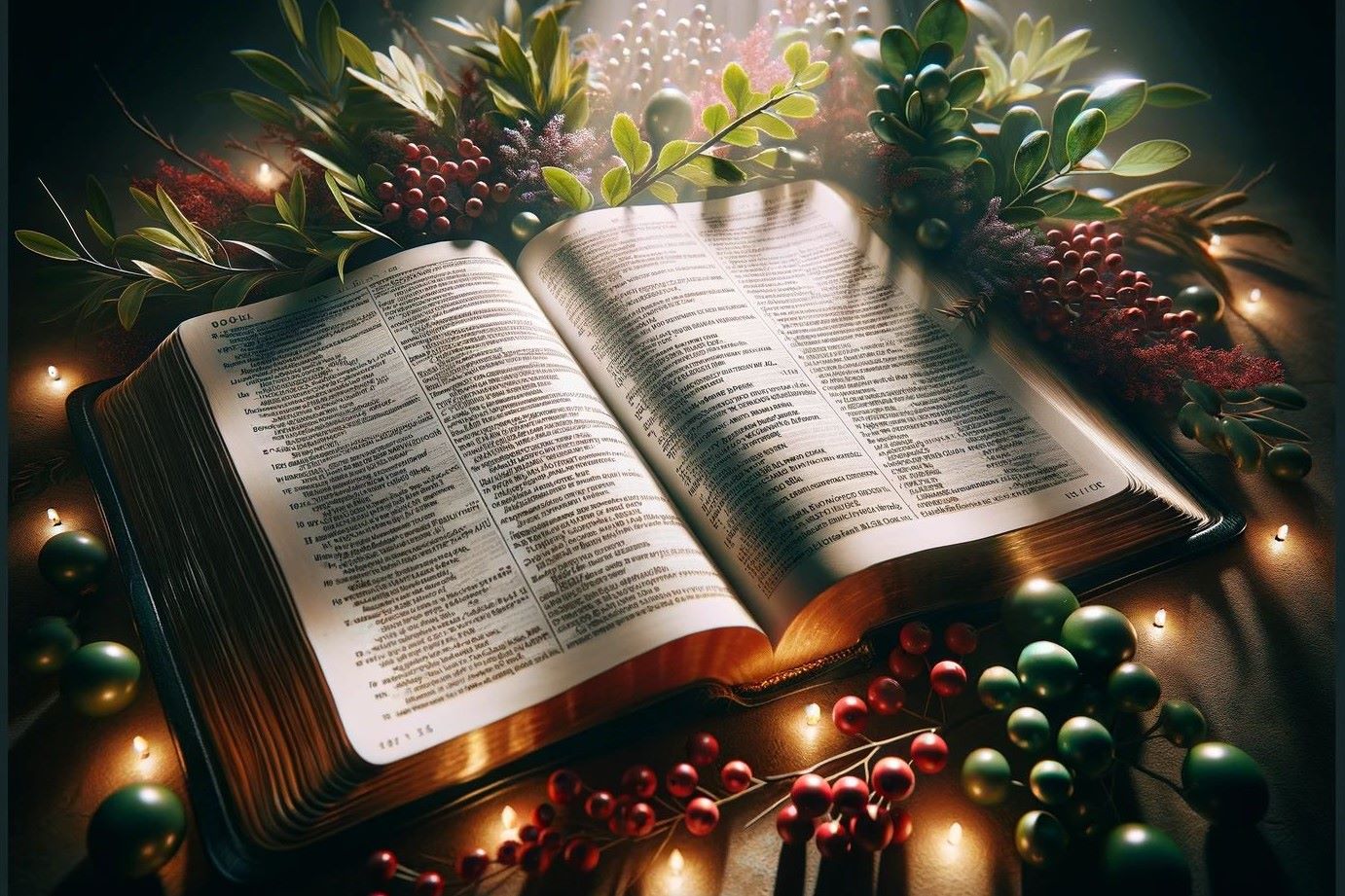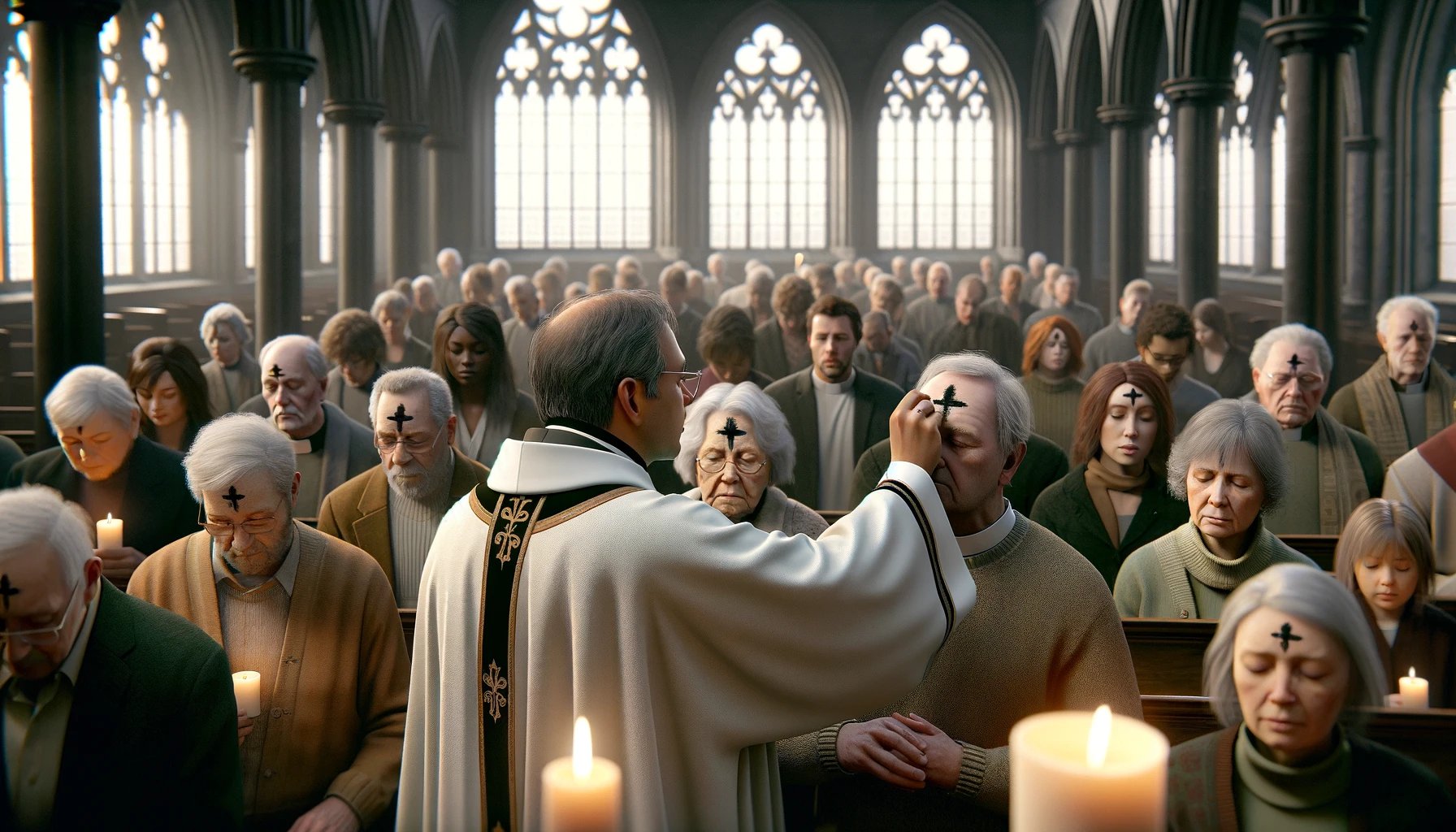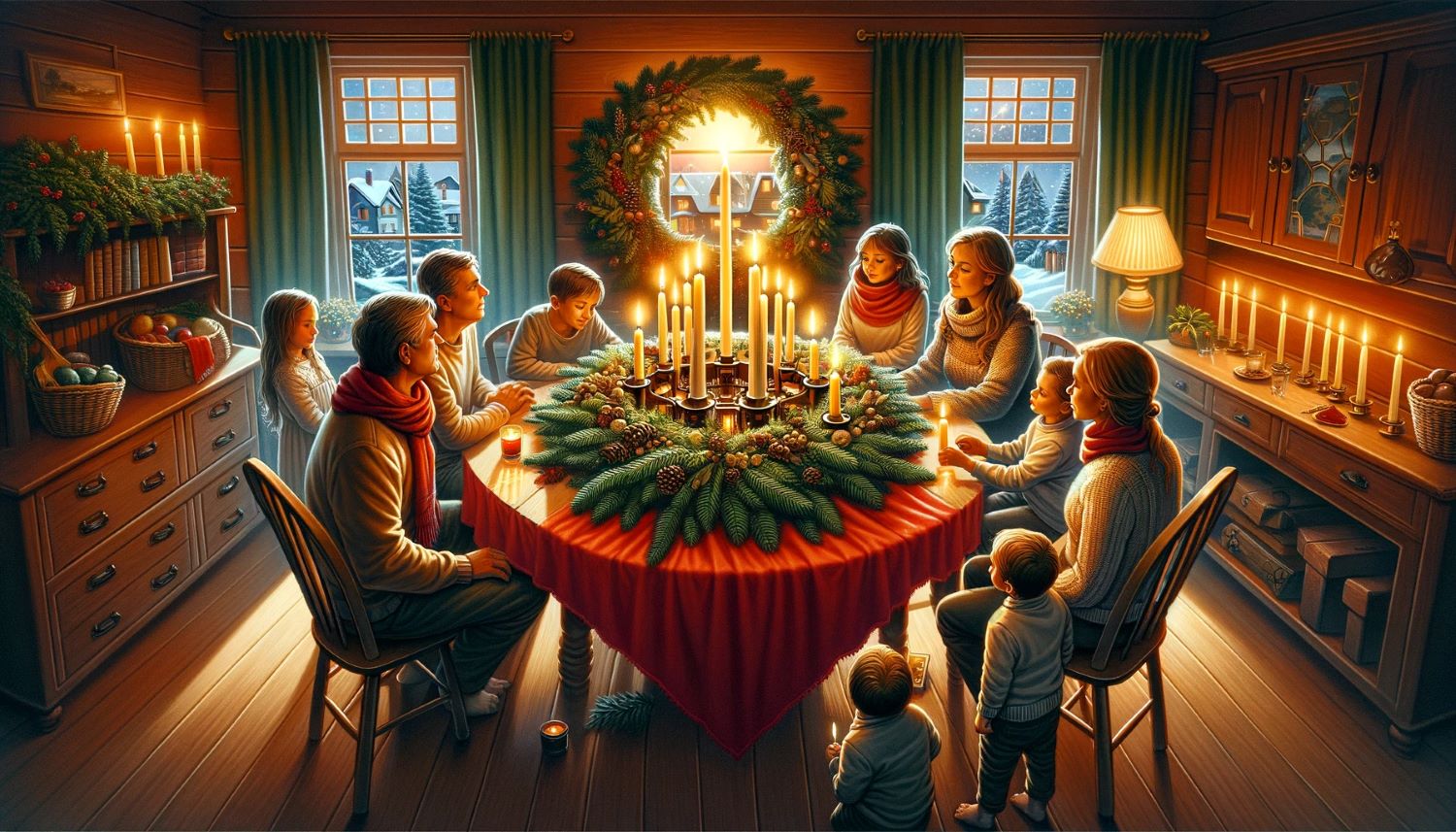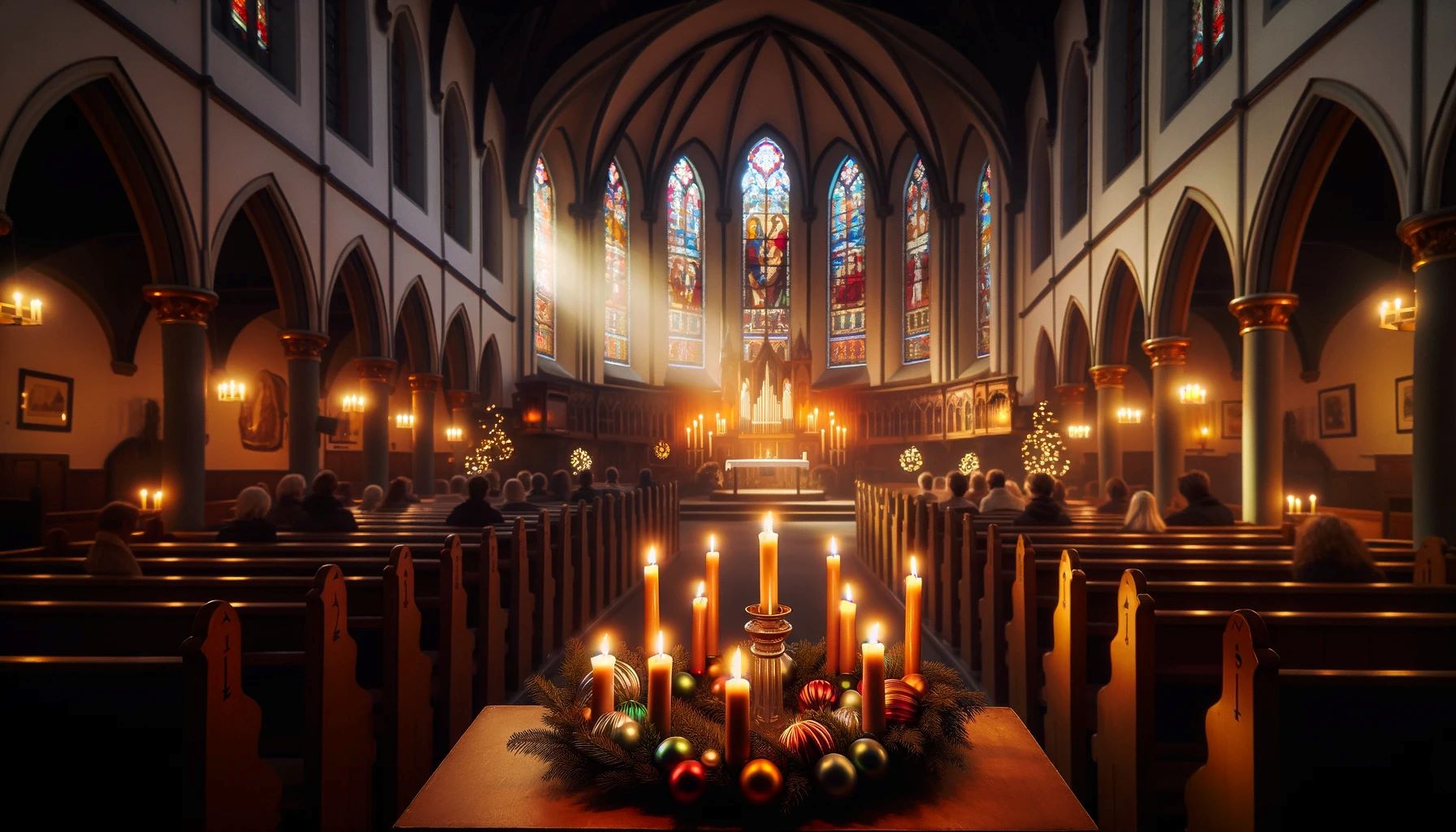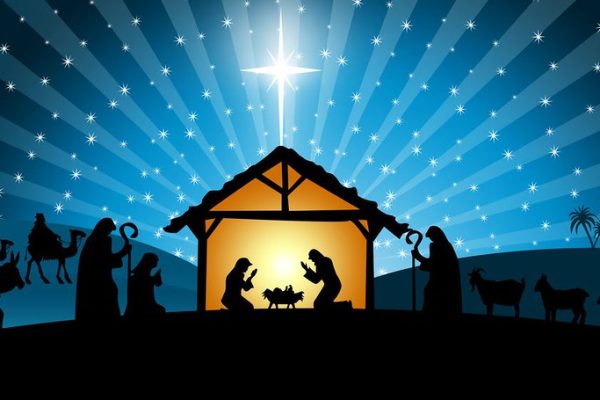Home>Special Themes>What Is Advent Season About
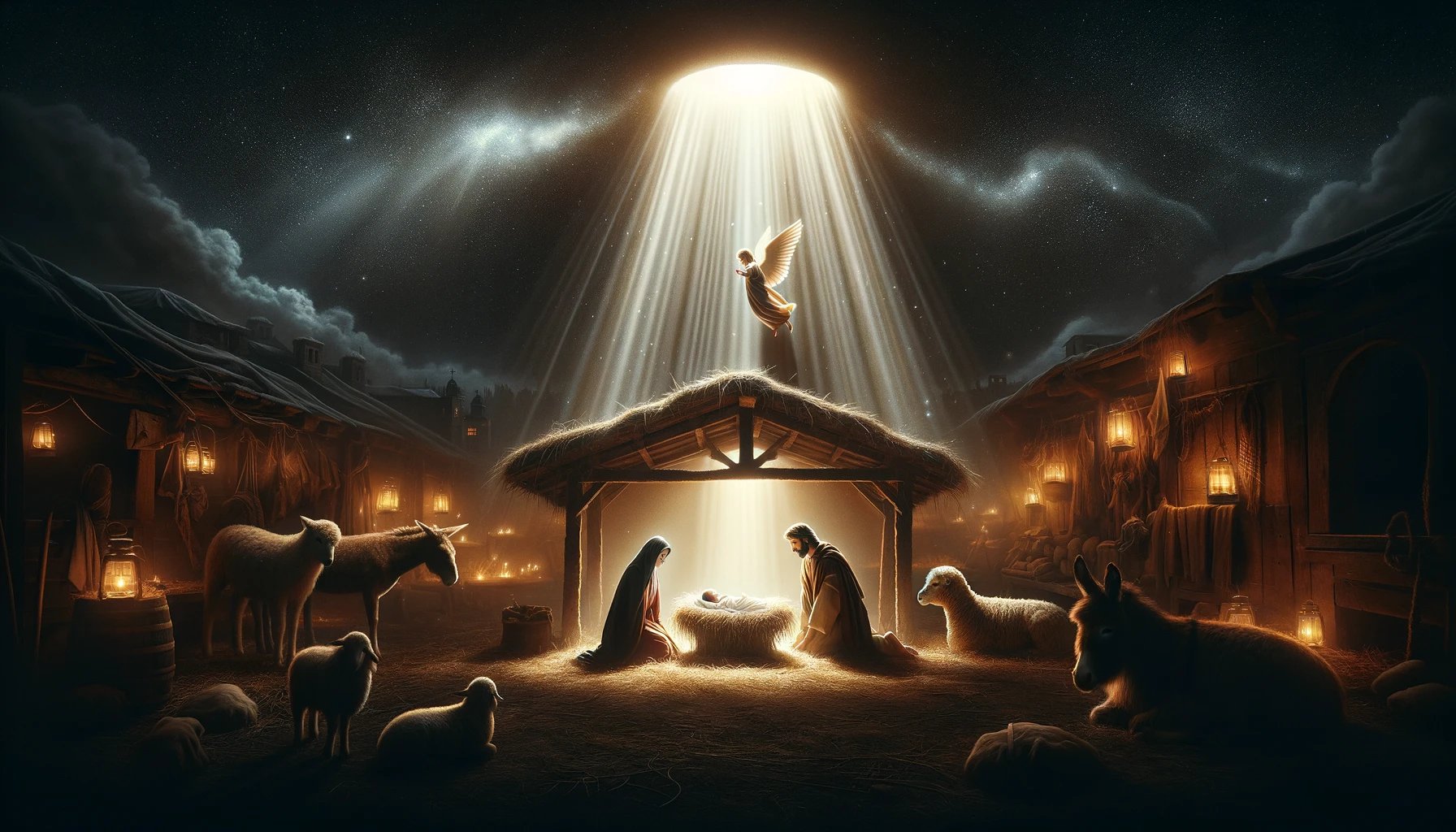

Special Themes
What Is Advent Season About
Published: February 13, 2024
Ericka Andersen, an editor at Christian.net, expertly merges digital strategy with content creation, focusing on faith and societal issues. Her communication skills enhance the platform's engaging narratives, fostering meaningful dialogue on belief's impact on society.
Discover the significance of Advent season and its special themes. Explore the traditions and spiritual meaning of this sacred time.
(Many of the links in this article redirect to a specific reviewed product. Your purchase of these products through affiliate links helps to generate commission for Christian.net, at no extra cost. Learn more)
Table of Contents
Introduction
The Advent season, which marks the beginning of the Christian liturgical year, is a time of anticipation, preparation, and hope. It encompasses the four Sundays leading up to Christmas and is a period of spiritual significance for millions of people around the world. During this time, individuals and communities engage in various traditions and rituals that symbolize the themes of faith, hope, joy, and love.
The word "Advent" is derived from the Latin word "adventus," meaning "coming" or "arrival." It serves as a time of expectant waiting and preparation for the celebration of the birth of Jesus Christ. Beyond its religious connotations, Advent also represents a universal theme of hope and renewal, resonating with people of diverse cultural and spiritual backgrounds.
As the days grow shorter and the natural world enters a phase of dormancy, the Advent season serves as a metaphorical journey from darkness to light. It invites individuals to reflect on the deeper meanings of life, to seek spiritual renewal, and to cultivate a sense of inner peace amidst the hustle and bustle of the holiday season.
Throughout history, the observance of Advent has been a time-honored tradition, providing a sacred space for believers to pause, reflect, and prepare their hearts for the celebration of Christ's birth. It is a time to rekindle the sense of wonder and awe that often gets overshadowed by the commercial aspects of the holiday season.
In the following sections, we will delve into the rich history of Advent, explore its profound meanings, and uncover the diverse traditions and symbols that have come to define this sacred season. From the lighting of Advent candles to the opening of Advent calendars, each custom holds a unique significance, adding depth and beauty to the observance of this cherished time of year.
Read more: What Is The Advent Season?
History of Advent
The history of Advent dates back to the early centuries of Christianity, with its origins rooted in the Western Christian tradition. The exact beginnings of Advent as a formal liturgical season are not precisely documented, but its emergence can be traced to the early Middle Ages. During this period, the Church recognized the need for a dedicated time of spiritual preparation leading up to the celebration of the birth of Jesus Christ.
The early Christians, particularly in the Western Church, sought to create a structured period of anticipation and reflection that would align with the themes of the Nativity. This led to the establishment of a preparatory season, known as Advent, which would serve as a time of penitence, prayer, and joyful expectation.
The earliest references to Advent can be found in the writings of St. Gregory of Tours in the 6th century, where he mentions the observance of a fast before Christmas. Over time, the observance of Advent evolved, with various regions and Christian denominations adopting their own customs and practices to mark the season.
By the 11th century, Advent had become an integral part of the liturgical calendar in Western Christianity. The season was characterized by a sense of solemnity and spiritual introspection, as believers prepared their hearts for the coming of Christ. Fasting, prayer, and almsgiving were common practices during this time, reflecting the penitential nature of the season.
The themes of Advent, including the anticipation of Christ's coming, the longing for spiritual renewal, and the hope for redemption, became deeply ingrained in the fabric of Christian worship. The four-week structure of Advent, with its focus on the virtues of faith, hope, joy, and love, gradually took shape, providing a framework for believers to engage in meaningful spiritual disciplines.
In the modern era, the observance of Advent has continued to evolve, with diverse expressions and interpretations emerging within different Christian traditions. While the historical roots of Advent are firmly planted in the early centuries of Christianity, its enduring significance resonates with believers across denominational lines, serving as a timeless reminder of the profound mystery and wonder of the Incarnation.
As we delve deeper into the history of Advent, we gain a deeper appreciation for the rich tapestry of traditions and beliefs that have shaped this sacred season, carrying its timeless message of hope and salvation through the ages.
Meaning of Advent
The meaning of Advent extends far beyond the countdown to Christmas. It encapsulates a profound sense of anticipation, spiritual preparation, and the celebration of hope. At its core, Advent represents a time of expectant waiting, not just for the commemoration of Christ's birth, but also for the fulfillment of God's promises and the dawning of a new era of redemption and renewal.
Advent is a season of reflection, inviting individuals to pause amidst the frenetic pace of modern life and contemplate the deeper significance of the Nativity. It serves as a reminder of the ancient longing for the Messiah, echoing the yearning of generations past and present for the arrival of a savior. This sense of longing is intricately woven into the fabric of Advent, infusing it with a poignant sense of anticipation and hope.
The four-week duration of Advent is symbolically represented by the lighting of candles on an Advent wreath, with each candle signifying a different aspect of the season: hope, peace, joy, and love. These themes resonate deeply with the human experience, transcending religious boundaries and speaking to the universal yearning for a brighter, more harmonious world.
Moreover, Advent is a time of spiritual preparation, calling individuals to examine their hearts and minds, and to cultivate a spirit of readiness for the coming of Christ. It encourages believers to engage in acts of kindness, generosity, and compassion, reflecting the transformative power of love and grace.
In a broader sense, the meaning of Advent extends beyond the historical context of Christ's birth, encompassing the anticipation of Christ's second coming and the ultimate fulfillment of God's redemptive plan. This dual focus on the past and future underscores the profound significance of Advent as a season of hope and expectation, bridging the gap between the earthly and the divine.
Ultimately, the meaning of Advent is deeply rooted in the human experience, resonating with the innate longing for light in the midst of darkness, for peace in the midst of turmoil, and for hope in the midst of uncertainty. It serves as a timeless reminder that amidst the challenges and complexities of life, the promise of redemption and renewal endures, illuminating the path toward a brighter and more hopeful future.
Advent Traditions
The observance of Advent is rich with diverse traditions that have been cherished and passed down through generations. These customs serve as poignant reminders of the season's profound themes and provide meaningful ways for individuals and communities to engage in spiritual preparation and reflection. From the lighting of Advent candles to the creation of Advent calendars, each tradition holds a unique significance, adding depth and beauty to the observance of this sacred time of year.
One of the most iconic Advent traditions is the lighting of the Advent wreath. This circular wreath, typically adorned with evergreen foliage and four candles, symbolizes the eternal nature of God and the hope brought by the coming of Christ. Each candle represents a different aspect of the Advent season: hope, peace, joy, and love. As the weeks progress, an additional candle is lit, signifying the incremental approach of Christmas and the growing anticipation of Christ's birth.
Another beloved tradition is the use of Advent calendars, which provide a delightful way to count down the days until Christmas. These calendars come in various forms, ranging from simple paper designs to elaborate wooden structures with hidden compartments. Each day leading up to Christmas, a new door or compartment is opened, revealing a small treat or symbol that serves as a daily reminder of the approaching celebration.
The lighting of Advent candles holds a special place in the hearts of many, as it serves as a visual representation of the season's themes. The first candle, often lit on the first Sunday of Advent, symbolizes hope and serves as a beacon of light in the midst of darkness. Subsequent candles, representing peace, joy, and love, are lit in succession, infusing the surroundings with warmth and symbolism.
Advent music also plays a significant role in the season's traditions, with hymns and carols carrying deep spiritual meaning. These musical expressions of faith and hope serve to uplift the soul and evoke a sense of reverence and joy. From traditional hymns such as "O Come, O Come, Emmanuel" to festive carols like "Joy to the World," the music of Advent resonates with the themes of anticipation and celebration.
In addition to these widely recognized traditions, many families and communities incorporate their own customs and rituals into the observance of Advent. Whether through acts of charity, communal gatherings, or personal reflections, these traditions serve to deepen the spiritual significance of the season and foster a sense of unity and shared purpose.
As we embrace these timeless traditions, we are reminded of the enduring power of faith, hope, and love, and the profound significance of the Advent season in illuminating the path toward the celebration of Christ's birth.
Advent Wreath
The Advent wreath stands as a timeless symbol of the season's profound significance, embodying the themes of hope, peace, joy, and love. This cherished tradition traces its roots to 16th-century Germany, where the use of wreaths as part of pre-Christmas devotions became increasingly popular. Over time, the Advent wreath evolved into a powerful visual representation of the anticipation and preparation for the coming of Christ.
Typically crafted from evergreen foliage, the circular shape of the wreath symbolizes the eternal nature of God and the unending cycle of life. Its lush greenery serves as a reminder of the enduring vitality of faith and the promise of new life brought by the birth of Jesus Christ. The four candles nestled within the wreath hold profound significance, each representing a different aspect of the Advent season.
The first candle, often purple or blue, symbolizes hope and is known as the "Prophet's Candle." It serves as a beacon of light in the midst of darkness, signifying the anticipation of the Messiah's arrival. As the first candle is lit on the first Sunday of Advent, it illuminates the path toward the celebration of Christ's birth, infusing the surroundings with a sense of eager expectation.
The second candle, also purple or blue, represents peace and is known as the "Bethlehem Candle." Its lighting signifies the journey of Mary and Joseph to Bethlehem and the tranquility that enveloped the humble stable where Jesus was born. As this candle is kindled, it serves as a poignant reminder of the peace that Christ brings to the world and the inner serenity that accompanies the anticipation of his arrival.
The third candle, often pink, symbolizes joy and is known as the "Shepherd's Candle." Its radiant flame embodies the jubilation of the shepherds who received the angelic proclamation of Christ's birth. As this candle is lit, it evokes a sense of exuberant celebration and serves as a testament to the profound joy that accompanies the anticipation of the Savior's coming.
The fourth candle, also purple or blue, represents love and is known as the "Angel's Candle." Its illumination signifies the love that permeates the Nativity story, from the divine love of God to the boundless love embodied by the Holy Family. As this candle is lit, it serves as a poignant reminder of the transformative power of love and the profound significance of Christ's imminent arrival.
As the Advent season progresses, an additional white candle, known as the "Christ Candle," is often placed in the center of the wreath. This candle is lit on Christmas Eve or Christmas Day, symbolizing the culmination of the season and the arrival of Christ, the Light of the World.
The lighting of the Advent wreath, accompanied by prayers, readings, and reflections, serves as a poignant ritual that deepens the spiritual significance of the season. It provides a sacred space for individuals and communities to engage in contemplation, fostering a sense of unity and shared purpose as they prepare their hearts for the celebration of Christ's birth.
In the glow of the Advent wreath, the timeless themes of hope, peace, joy, and love come to life, illuminating the path toward the joyous celebration of Christmas and serving as a poignant reminder of the enduring significance of the Advent season.
Read more: What Is Important About Advent
Advent Calendar
The Advent calendar stands as a beloved tradition that adds an element of anticipation and delight to the observance of the Advent season. Originating in 19th-century Germany, the Advent calendar has evolved into a cherished custom that captures the spirit of joyful expectation leading up to Christmas.
Typically, an Advent calendar consists of a decorative panel or series of compartments, each corresponding to a day in December leading up to Christmas. These compartments may contain small treats, symbols, or images that serve as daily reminders of the approaching celebration. The act of opening a new door or compartment each day creates a sense of eager anticipation, infusing the season with a spirit of excitement and wonder.
The Advent calendar serves as a tangible way to count down the days until Christmas, providing a daily ritual that engages both children and adults in the joyful anticipation of the Nativity. Whether in the form of traditional paper calendars adorned with festive illustrations or modern renditions featuring interactive digital displays, the Advent calendar continues to captivate hearts and minds across the globe.
Beyond its role as a countdown to Christmas, the Advent calendar also serves as a tool for spiritual reflection and contemplation. Many Advent calendars incorporate religious imagery, scriptures, or devotional messages, offering a daily opportunity for individuals to pause and connect with the deeper meanings of the season. This intentional focus on spiritual preparation adds a profound dimension to the Advent calendar, transforming it into a meaningful expression of faith and hope.
In addition to its spiritual significance, the Advent calendar fosters a sense of togetherness and shared anticipation within families and communities. The daily ritual of opening a new compartment can become a cherished tradition, creating moments of joy and connection as loved ones gather to partake in the countdown to Christmas. This communal aspect of the Advent calendar reinforces the season's themes of love, unity, and the joy of shared anticipation.
As the Advent calendar continues to endure as a beloved tradition, its ability to evoke a sense of wonder, anticipation, and spiritual reflection remains as powerful as ever. Whether through the simple act of opening a paper door or the interactive experience of a digital calendar, the Advent calendar serves as a timeless reminder of the joyous anticipation that accompanies the Advent season, enriching the journey toward the celebration of Christ's birth.
Advent Candles
The lighting of Advent candles holds a special place in the observance of the Advent season, serving as a poignant ritual that symbolizes the incremental approach of Christmas and the growing anticipation of Christ's birth. The tradition of using candles to mark the progression of Advent dates back to the early 19th century and has since become a cherished custom in Christian households and congregations around the world.
The Advent wreath, typically adorned with evergreen foliage and four candles, serves as the focal point for the lighting of Advent candles. Each candle represents a different aspect of the Advent season: hope, peace, joy, and love. The lighting of these candles, often accompanied by prayers, readings, and reflections, provides a sacred space for individuals and communities to engage in contemplation, fostering a sense of unity and shared purpose as they prepare their hearts for the celebration of Christ's birth.
The first candle, often purple or blue, symbolizes hope and is known as the "Prophet's Candle." It serves as a beacon of light in the midst of darkness, signifying the anticipation of the Messiah's arrival. As the first candle is lit on the first Sunday of Advent, it illuminates the path toward the celebration of Christ's birth, infusing the surroundings with a sense of eager expectation.
The second candle, also purple or blue, represents peace and is known as the "Bethlehem Candle." Its lighting signifies the journey of Mary and Joseph to Bethlehem and the tranquility that enveloped the humble stable where Jesus was born. As this candle is kindled, it serves as a poignant reminder of the peace that Christ brings to the world and the inner serenity that accompanies the anticipation of his arrival.
The third candle, often pink, symbolizes joy and is known as the "Shepherd's Candle." Its radiant flame embodies the jubilation of the shepherds who received the angelic proclamation of Christ's birth. As this candle is lit, it evokes a sense of exuberant celebration and serves as a testament to the profound joy that accompanies the anticipation of the Savior's coming.
The fourth candle, also purple or blue, represents love and is known as the "Angel's Candle." Its illumination signifies the love that permeates the Nativity story, from the divine love of God to the boundless love embodied by the Holy Family. As this candle is lit, it serves as a poignant reminder of the transformative power of love and the profound significance of Christ's imminent arrival.
As the Advent season progresses, an additional white candle, known as the "Christ Candle," is often placed in the center of the wreath. This candle is lit on Christmas Eve or Christmas Day, symbolizing the culmination of the season and the arrival of Christ, the Light of the World.
The lighting of Advent candles, with its rich symbolism and spiritual significance, serves as a timeless reminder of the enduring themes of hope, peace, joy, and love that define the Advent season. It provides a tangible and visually compelling way for individuals and communities to engage in the spiritual preparation and reflection that characterize this sacred time of year.
Advent Music
Advent music holds a profound and evocative role in the observance of the Advent season, enriching the spiritual journey toward the celebration of Christ's birth. From traditional hymns to festive carols, the music of Advent serves as a powerful medium for expressing the themes of anticipation, hope, and joy that define this sacred time of year.
One of the most iconic Advent hymns, "O Come, O Come, Emmanuel," encapsulates the longing and expectation of the Messiah's arrival. Its haunting melody and evocative lyrics transport listeners to a time of ancient yearning, echoing the deep desire for the fulfillment of God's promises. As the hymn unfolds, it weaves a tapestry of hope and anticipation, inviting individuals to immerse themselves in the timeless longing for Emmanuel, the "God with us."
Similarly, the beloved carol "Joy to the World" resonates with the jubilant spirit of the Advent season, celebrating the arrival of the Savior with exuberant praise and rejoicing. Its triumphant melody and uplifting lyrics evoke a sense of joy and anticipation, heralding the arrival of Christ and the promise of redemption. As voices unite in singing this timeless carol, the air is filled with the infectious exultation of the season, infusing hearts with a spirit of celebration and hope.
In addition to these classic compositions, a rich tapestry of Advent music encompasses a diverse array of hymns, carols, and choral works that capture the essence of the season. From the solemn strains of "Come, Thou Long Expected Jesus" to the tender beauty of "The Angel Gabriel from Heaven Came," each musical expression serves to deepen the spiritual significance of Advent, fostering a sense of reverence and contemplation.
The melodies and lyrics of Advent music carry a timeless message of hope, renewal, and the promise of salvation, resonating with the universal longing for light in the midst of darkness. As voices unite in song and instruments blend in harmonious melodies, the music of Advent becomes a powerful conduit for expressing the profound themes of the season, inviting individuals to immerse themselves in the rich tapestry of faith and anticipation.
As we embrace the melodies of Advent, we are reminded of the enduring power of music to uplift the soul, evoke a sense of wonder, and unite hearts in shared anticipation. Through its evocative beauty and timeless resonance, Advent music enriches the spiritual journey toward the celebration of Christ's birth, illuminating the path with melodies of hope and joy.
Conclusion
In conclusion, the Advent season encompasses a tapestry of traditions, symbols, and rituals that collectively embody the profound themes of hope, anticipation, and spiritual preparation. From its rich historical roots to its enduring significance in contemporary times, Advent serves as a timeless reminder of the universal longing for light in the midst of darkness and the promise of renewal and redemption.
The history of Advent, with its origins in the early centuries of Christianity, reflects the deep-seated need for a dedicated season of anticipation and reflection leading up to the celebration of the birth of Jesus Christ. This historical journey has given rise to a diverse array of traditions and customs that continue to shape the observance of Advent across different cultures and denominations.
The meaning of Advent extends far beyond the countdown to Christmas, encapsulating a profound sense of longing, spiritual renewal, and the celebration of hope. It serves as a poignant reminder of the ancient yearning for the Messiah and the enduring promise of God's redemptive plan, resonating with individuals of diverse backgrounds and beliefs.
The Advent traditions, including the lighting of Advent candles, the use of Advent calendars, the creation of Advent wreaths, and the music of the season, provide meaningful ways for individuals and communities to engage in spiritual preparation and reflection. These cherished customs serve to deepen the spiritual significance of the season, fostering a sense of unity and shared purpose as believers prepare their hearts for the celebration of Christ's birth.
As the Advent season unfolds, the lighting of Advent candles, the opening of Advent calendars, and the melodies of Advent music serve as poignant reminders of the enduring themes of hope, peace, joy, and love that define this sacred time of year. These traditions create a sacred space for individuals and communities to engage in contemplation, fostering a sense of unity and shared purpose as they prepare their hearts for the celebration of Christ's birth.
In essence, the Advent season stands as a testament to the timeless themes of faith, hope, and love, resonating with the innate longing for light in the midst of darkness and the promise of renewal and redemption. As we journey through the Advent season, we are reminded of the enduring significance of this sacred time, illuminating the path toward the joyous celebration of Christmas and serving as a poignant reminder of the timeless message of hope and salvation.

